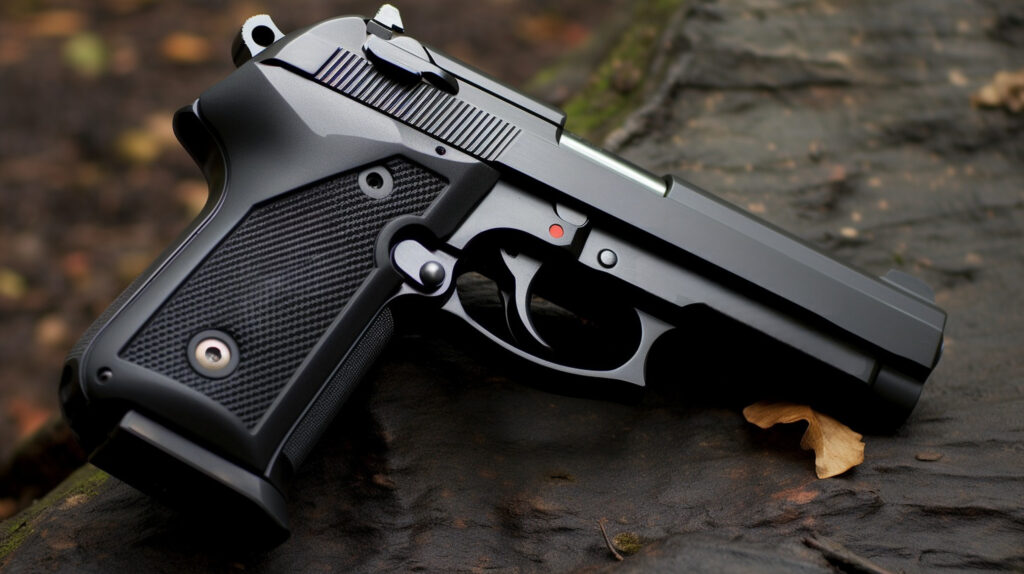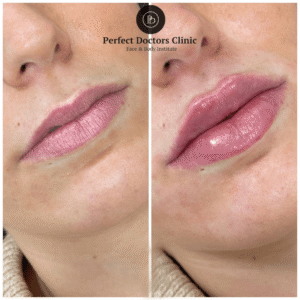
Buying a used glock 43x can be a great way to get a reliable, compact pistol at a better price, but used firearms carry risks: hidden wear, damaged internals, or modifications that affect safety and legality. Test-firing is the single best way to evaluate mechanical function, accuracy, reliability, and whether the pistol fits you. This guide walks you step-by-step through safe inspection, dry-fire checks, and live-fire testing to help you make a confident purchase decision.
Legal and safety groundwork
Confirm legality and safe transfer
Before you touch the pistol, confirm the seller’s right to sell and that you can legally receive the firearm in your jurisdiction. Use an FFL for transfers where required and verify identification and paperwork. Never place yourself in a legally risky position for the sake of a deal.
Safety first: mindset and gear
Treat every gun as loaded until you personally verify otherwise. Bring basic safety gear: eye protection, hearing protection, and a few trusted magazines and ammunition (if allowed). If testing at a range, follow range rules and announce your intent to function-test a used firearm to the range staff.
Initial visual inspection
Overall condition and serial number
Start by visually examining the slide, frame, and barrel. Look for mismatched serial numbers, which can suggest parts swapping or illegal activity. Check the serial number against any paperwork, and inspect for signs of illegal alterations—filed numbers, non-factory welds, or obvious tampering.
External wear and finish
Examine finish wear around common contact points: slide rails, muzzle crown, slide stop, and barrel hood. Heavy wear in unusual places—like inside the slide stop or around the locking block—can indicate excessive use or poor maintenance. Surface rust, pitting, or deep gouges, especially on the barrel and slide, are red flags.
Sights, controls, and accessories
Check sights for straightness and secure mounting. Test the slide stop, takedown components, and magazine release for crisp operation. If the pistol has an optic, red dot, or aftermarket backplate, verify the mounts are secure and not cracked. If the pistol features night sights or other electronics, confirm they function.
Internal inspection
Field-strip and inspect the internals
Perform a safe field-strip (after verifying unloaded). Inspect the barrel crown for damage, the feed ramp for smoothing, and the chamber for pitting or fouling. Check the recoil spring assembly for deformation and the extractor for chips or wear. On the Glock 43x specifically, ensure the firing pin channel and safety parts show no corrosion or obstruction.
Barrel throat and crown
A damaged crown can ruin accuracy. Use a bore light or smartphone flashlight to inspect the barrel crown and rifling. Look for bulging, severe erosion, or signs of improper headspacing. Rifling should be clean with consistent lands and grooves.
Slide and frame rails
Inspect both slide and frame rails for unusual gouging or metal fatigue. Excessive rail wear can indicate harsh aftermarket springs or poor lubrication. The frame should be intact without cracks near the trigger housing or takedown pins.
Magazine inspection
Condition and fit of magazines
Bring at least two good magazines that match the pistol or confirm the seller provides the factory mags. Inspect mag lips for deformation, the follower for smooth movement, and the spring for tension and rust. Load and unload each magazine to test spring tension and floorplate security. A used Glock often has good aftermarket magazine options, but factory mags are a solid baseline.
Function checks without ammo (dry-fire & manipulation)
Safe dry-fire protocol
Dry-fire testing reveals trigger function and reset without live rounds. After confirming the gun is empty (visually and physically check the chamber and mag well), perform multiple controlled dry-fires. For the used Glock 43x, check trigger pull feel, reset distinctness, and any unusual grit or binding. Do not rely solely on dry-fire—it’s a diagnostic, not a guarantee.
Slide manipulation and lockback tests
Rack the slide repeatedly, pull the trigger, and ensure the slide locks back on an empty magazine (if applicable). On the 43x, check the slide lock and release engage cleanly. Cycle the slide with and without the magazine to ensure consistent operation and no catching.
Trigger and safety component checks
Glock pistols have internal safeties (trigger safety, firing pin safety, drop safety). Make sure the trigger safety tab operates freely and returns to the proper position when released. If the trigger has been modified, be cautious—aftermarket triggers sometimes alter safety behavior and could be illegal or dangerous.
Live-fire testing at the range
Choosing the right range and ammo
Conduct live-fire at a supervised range where you’re allowed to function-test a used firearm. Bring a variety of ammunition types—standard factory defense loads and a couple of practice loads—to observe feeding and extraction across brands and bullet profiles. Avoid steel-cased ammo if you suspect extractor weakness; brass-cased factory ammo is ideal.
Start with a short function test
Load one magazine and fire a 3–5 round string while focusing on basic functions: ignition consistency, ejection pattern, and whether the slide cycles fully. Observe the brass ejection—consistent, forceful ejection to the side indicates a healthy extractor and recoil spring. Misfeeds, stovepipes, or light strikes during this stage are red flags.
Extended reliability test
If the pistol passes basic function, move to a longer test—50–100 rounds if allowed. Cycle different magazines and ammo brands. Watch for failures to feed (FTF), failures to eject (FTE), light primer strikes, or extractor issues. Note any hiccups and whether they correlate to specific magazines or ammo.
Accuracy and point-of-impact checks
At a comfortable, safe distance (25 yards is a practical pistol test distance), fire groups to evaluate accuracy and point of impact. The used glock 43x is a compact carry pistol; acceptable accuracy is two- to three-inch groups at 7–15 yards and reasonable group sizes at 25 yards. Large, inconsistent groups may signal barrel damage or poorly fitted sights.
Recoil and ergonomics assessment
Comfort and grip
The 43x’s slim profile fits many hands, but check ergonomics: can you reach the trigger safely, manipulate the slide, and operate the magazine release without strain? Fire multiple rounds to confirm the pistol’s recoil impulse is manageable for you and to see how quickly you can re-acquire sights for follow-up shots.
Accessory compatibility
If you plan to use an optic, light, or holster, test how the pistol fits with your intended accessories. Ensure aftermarket additions do not interfere with mechanical function or safety features.
Documentation, provenance, and serial verification
Ask for history and paperwork
Request any receipts, service records, original box, and manuals. Ask the seller about how the pistol was used—duty carry vs range use—and whether it has been professionally serviced. For a used Glock 43x, factory service records or a clean provenance increases confidence.
Check serial numbers and recall history
Confirm the serial number on multiple parts (frame and slide) and that it matches any paperwork. Consider checking manufacturer recall or service notices for that serial range if possible. If the seller resists sharing serial info for verification, treat that as a warning sign.
Red flags and when to walk away
Common deal-breakers
Severe barrel damage, chopped or altered serial numbers, persistent reliability problems in multiple magazines and ammo types, cracked frames, or missing critical safeties are immediate walk-away items. Cosmetic wear alone isn’t fatal, but functional problems that affect safety or reliability are. If the pistol requires significant gunsmithing to be safe and reliable, the price must reflect that—often it’s best to pass.
Negotiating based on findings
If issues are minor and you’re comfortable addressing them (e.g., swapping a worn recoil spring or replacing magazines), use your findings to negotiate. Have a realistic repair estimate and be willing to walk away if the seller’s price doesn’t reflect the work needed.
Final paperwork and safe transfer
Complete the lawful transfer
Once satisfied, complete the transaction lawfully. Use an FFL if required, complete background checks where applicable, and ensure a bill of sale records make/model/serial and sale price. Keep all documentation safe.
Post-purchase maintenance and baseline checks
After purchase, perform a complete cleaning, replace common consumables (recoil spring, magazine springs if old), and consider a professional inspection or test by a gunsmith. Establish a baseline function test with known-good ammo and magazines so you know how your new-to-you pistol should perform.
Conclusion
A confident, safe purchase of a used Glock 43x
Testing a used glock 43x safely before purchase requires patience, the right environment, and methodical checks: visual inspection, internal inspection, dry-fire manipulation, and live-fire reliability and accuracy testing. Verify magazines, provenance, and serial numbers, and never ignore legal transfer steps. If the pistol passes these tests you’re well positioned to own a compact, dependable carry gun. Finally, when you buy firearms for personal protection or sport, do so lawfully, document the transfer, and maintain them responsibly.



